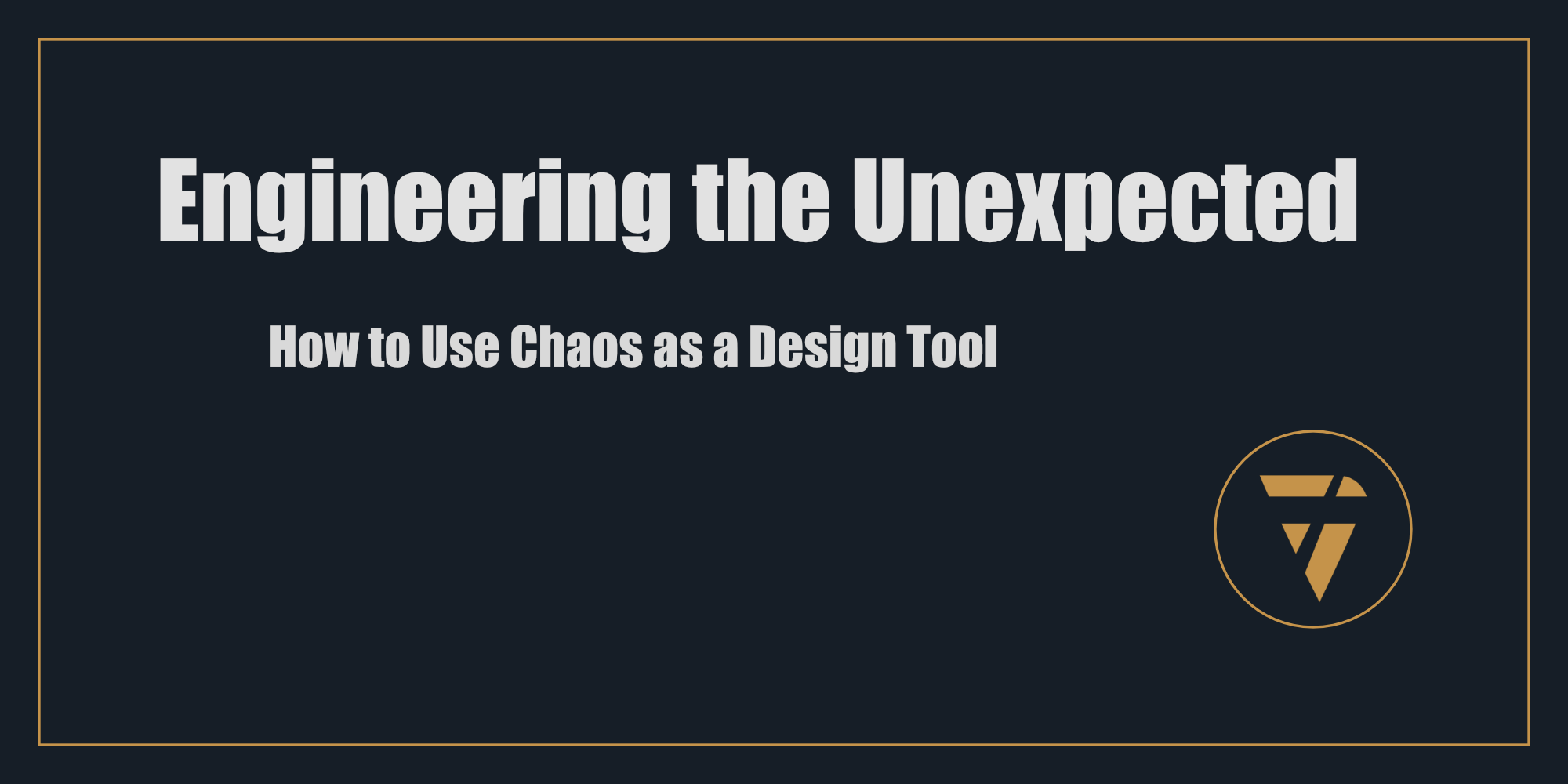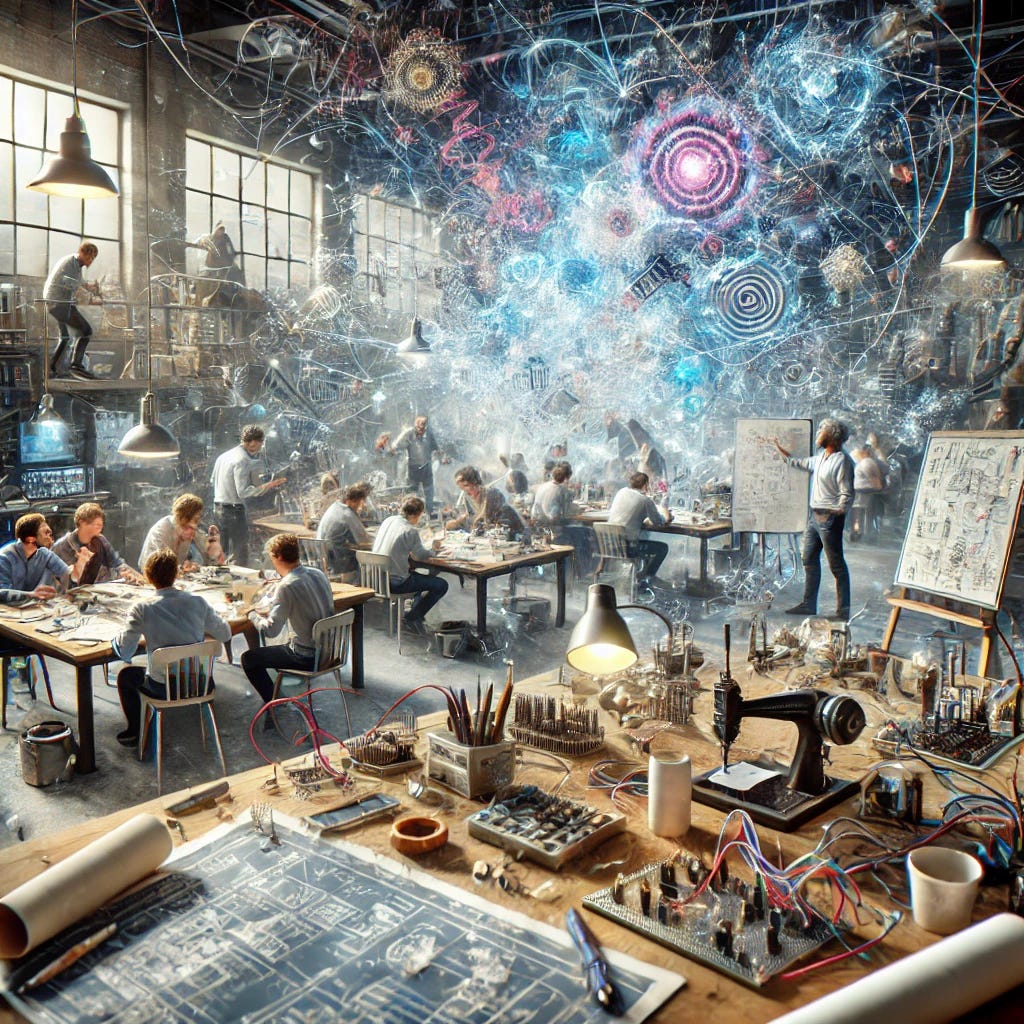Engineering the Unexpected
How to Use Chaos as a Design Tool

Chaos gets a bad rap in engineering. We spend our careers trying to reduce it, control it, or eliminate it entirely. We build redundancies to protect against it, create simulations to predict it, and design systems to withstand it.
But what if chaos wasn’t the enemy? What if, instead, it was a hidden ally—a source of creativity, innovation, and resilience? In nature, chaos drives evolution. In science, it sparks discovery. And in engineering, it can lead to groundbreaking designs if we know how to work with it rather than against it.
Welcome to the art of engineering the unexpected, where unpredictability isn’t a flaw—it’s a feature.
Chaos as the Mother of Innovation
Some of the greatest engineering breakthroughs didn’t happen because things went according to plan—they happened because things didn’t. Penicillin was discovered when a petri dish was accidentally contaminated. The Post-it Note was born out of a failed attempt to create a super-strong adhesive.
Chaos challenges assumptions, forcing us to think differently and adapt. When harnessed, it becomes a crucible for creativity.
Lesson:
Instead of asking, “How do I eliminate unpredictability?” ask, “How can I use unpredictability to discover something new?”
Principles of Designing with Chaos
Welcome Entropy
Systems naturally move toward disorder, and fighting that is a losing battle. Instead, embrace entropy by building flexible, adaptive designs. Think of how load-balancing in networks dynamically redistributes traffic to prevent failures.
Mindful Action:
When your project feels like it’s spiraling out of control, pause and ask: “What opportunities is this chaos presenting that I wouldn’t have seen otherwise?”Prototype for Failure
Chaos doesn’t mean abandoning structure—it means building structures that can absorb shocks. Engineers at SpaceX expect rockets to explode during testing; each failure provides critical data for the next iteration.
Mindful Action:
Shift your mindset from avoiding failure to designing for it. What’s the worst that could happen, and how can you turn that into a learning opportunity?Introduce Randomness on Purpose
Some of the most innovative designs come from incorporating randomness. Genetic algorithms, for example, mimic evolution by introducing random mutations into problem-solving processes.
Mindful Action:
Add an element of randomness to your process. Shuffle your task order, brainstorm with unrelated concepts, or let a dice roll determine your next step.
Chaos as a Test of Resilience
Chaos doesn’t just spark innovation; it also reveals weak points. Engineers simulate chaotic conditions to stress-test designs, from earthquake-proof buildings to cybersecurity systems.
Practical Application:
- If you’re building software, try “chaos engineering” tools like Netflix’s Chaos Monkey, which randomly disables parts of your system to test its resilience.
- If you’re managing a team, simulate unpredictable scenarios to see how workflows hold up under pressure.
Mindful Reflection:
What weaknesses has chaos revealed in your projects? How can you use that information to strengthen your design?

The Balance of Chaos and Control
While chaos is a powerful tool, it needs to be balanced with structure. Think of it like jazz: the most creative improvisations happen within a framework of rhythm and harmony.
Set Boundaries for Chaos:
Create “safe zones” where unpredictability can run wild without derailing the entire project. For example, a brainstorming session with no rules followed by structured analysis.
Let Go of Perfection:
Chaos is messy, and that’s okay. Often, the best solutions emerge when you stop trying to control every variable.
Reflect and Iterate:
After embracing chaos, step back and analyze the results. What worked? What didn’t? How can you refine the process?
A Real-World Example: Biomimicry and Chaos
Nature thrives on chaos, and engineers have learned to take inspiration from it. Wind turbines designed with irregular, nature-inspired patterns reduce noise and improve efficiency. Algorithms that mimic ant colonies adapt to unpredictable environments better than rigid designs.
What This Teaches Us:
- Nature doesn’t fear chaos—it leverages it. By adopting a similar mindset, we can create systems that are not only innovative but also resilient.
Your Chaos Challenge
This week, experiment with embracing unpredictability:
- In your next project, introduce a random variable—whether it’s a wildcard team member, an unexpected input, or a shuffled timeline.
- Reflect on a recent “failure.” What did it teach you that success wouldn’t have?
- Build something intentionally imperfect. Notice how it forces you to think differently.
Engineering the Unexpected
Chaos isn’t the enemy of engineering—it’s the birthplace of creativity, resilience, and innovation. By shifting our perspective from “control” to “collaborate,” we can turn disorder into an essential design tool.
The next time your project veers off course, don’t fight it. Lean in. Somewhere in the chaos lies the next big breakthrough.
What’s Your Take?
Have you ever turned chaos into a creative advantage? Share your story, or connect with me to explore how unpredictability can fuel innovation in engineering—and in life.
This Substack is reader-supported. To receive new posts and support my work, consider becoming a free or paid subscriber.
This is what I’m working on. Tell me what you think, I enjoy the conversation! Subscribe and follow the work in real time.
Thanks!
B
Chaos isn’t the enemy of engineering—it’s a design tool. Embrace unpredictability, let it challenge assumptions, and watch innovation emerge from the unexpected.
PS -





